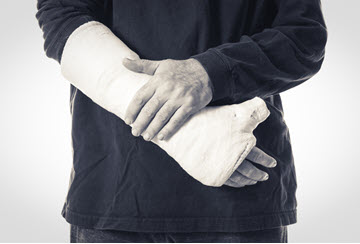This article, describing and debunking some of the common myths about osteoporosis, appeared in The Huffington Post in November 2016. It has been republished with permission.
Byline: Dr. Famida Jiwa, President and CEO, Osteoporosis Canada
November may be Osteoporosis Month, yet just five per cent of Canadians consider themselves to be knowledgeable about the disease whose resultant bone fractures are more common than heart attack, stroke and breast cancer combined. To help protect yourself, it’s time to get better informed – and challenge common misperceptions that can impact your ability to stay healthy.
Myth #1: Osteoporosis is a normal, unavoidable part of aging.
Many people think that osteoporosis is a natural part of aging, but this is simply not true. Osteoporosis develops when bone resorption happens faster than bone building, causing bones to become thin and porous, decreasing bone strength and leading to increased risk of breaking a bone, which can occur for a variety of reasons. Over 80 per cent of fractures in people 50+ are caused by osteoporosis. Until a bone breaks – there are often no symptoms, which is why osteoporosis is often called the “silent thief”.
Steps can be taken to reduce the risk of osteoporosis; everyone aged 30+ is encouraged to speak to a healthcare professional about the disease and the steps that they can start to take now and throughout life to protect themselves.
Myth #2: Osteoporosis is a disease that only affects women.
Osteoporosis affects men as well as women. In fact, at least one in five men will suffer from an osteoporotic fracture during their lifetime, and today one quarter of the 30,000 hip fractures caused by osteoporosis are in men, which can be debilitating and even life-threatening.
Men aged 50+ should be assessed by a doctor to determine their risk for fracture, and all men aged 65+ should have a Bone Mineral Density (BMD) test. Also, all men aged 50-64 with the following risk factors should undergo this test:
- Have broken a bone from a simple fall or bump after the age of 40
- Have a parent who’s had a hip fracture
- Smoke
- Regularly drink three or more alcoholic drinks per day
- Weigh less than 60 kg or 132 lbs.
- Are being treated with hormone therapy for prostate cancer
Myth #3: Calcium and vitamin D are the only important nutrients needed for bone health.
Calcium is important. Guidelines recommend consumption of 1,000-1,200 mg of calcium per day, but many Canadians fail to reach this level with their dietary intake – with some getting as little as 300 mg a day. While calcium and vitamin D are essential for your bones, they are not the only important nutrients. A well-balanced diet, made up of all the four food groups in Canada’s Food Guide, will help you to meet your daily requirements.
There are very few food sources of vitamin D. In fact, it is impossible for adults to get sufficient vitamin D from diet alone, no matter how good their nutrition. Therefore, Osteoporosis Canada recommends routine vitamin D supplementation for all Canadian adults year round. Healthy adults between 19-50 years of age, including pregnant or breastfeeding women, require 400 – 1,000 IU daily. Those over 50 or those younger adults at high risk (with osteoporosis, multiple fractures, or conditions affecting vitamin D absorption) should receive 800 – 2,000 IU daily.
Bone is made up of protein, a nutrient that is necessary for building and repairing body tissues including bones. Protein gives bone its strength and flexibility. Protein is also the big component of muscles, which are, of course, crucial for mobility and in preventing falls. The “Meat and Alternatives” food group provides your body with protein. Meat and alternatives also contain other vitamins and minerals that are essential for overall good health. The “Meats” include beef, pork, poultry and fish. The “Alternatives” include beans, lentils, tofu, eggs, peanut (or other nut) butter, shelled nuts and seeds. Milk products are also a good source of protein and have the added advantage of being good sources of calcium. Fluid milk also contains vitamin D.
Osteoporosis can result in disfigurement, lowered self-esteem, reduction or loss of mobility, and decreased independence. Prevention is paramount and needs to start early. Osteoporosis is a very serious, but preventable disease, and that’s why it is never too early to start thinking about bone health and the small steps you can take, at any age, to reduce your risk. For more information, please find Osteoporosis Canada online at www.osteoporosis.ca.
 Osteoporosis Canada is Canada’s expert body for information about osteoporosis management and risk reduction. Osteoporosis Canada offers a wide-range of credible, evidence-based resources for consumers, patients and healthcare professionals to learn more about osteoporosis and how to minimize your risk of breaking a bone.
Osteoporosis Canada is Canada’s expert body for information about osteoporosis management and risk reduction. Osteoporosis Canada offers a wide-range of credible, evidence-based resources for consumers, patients and healthcare professionals to learn more about osteoporosis and how to minimize your risk of breaking a bone.


